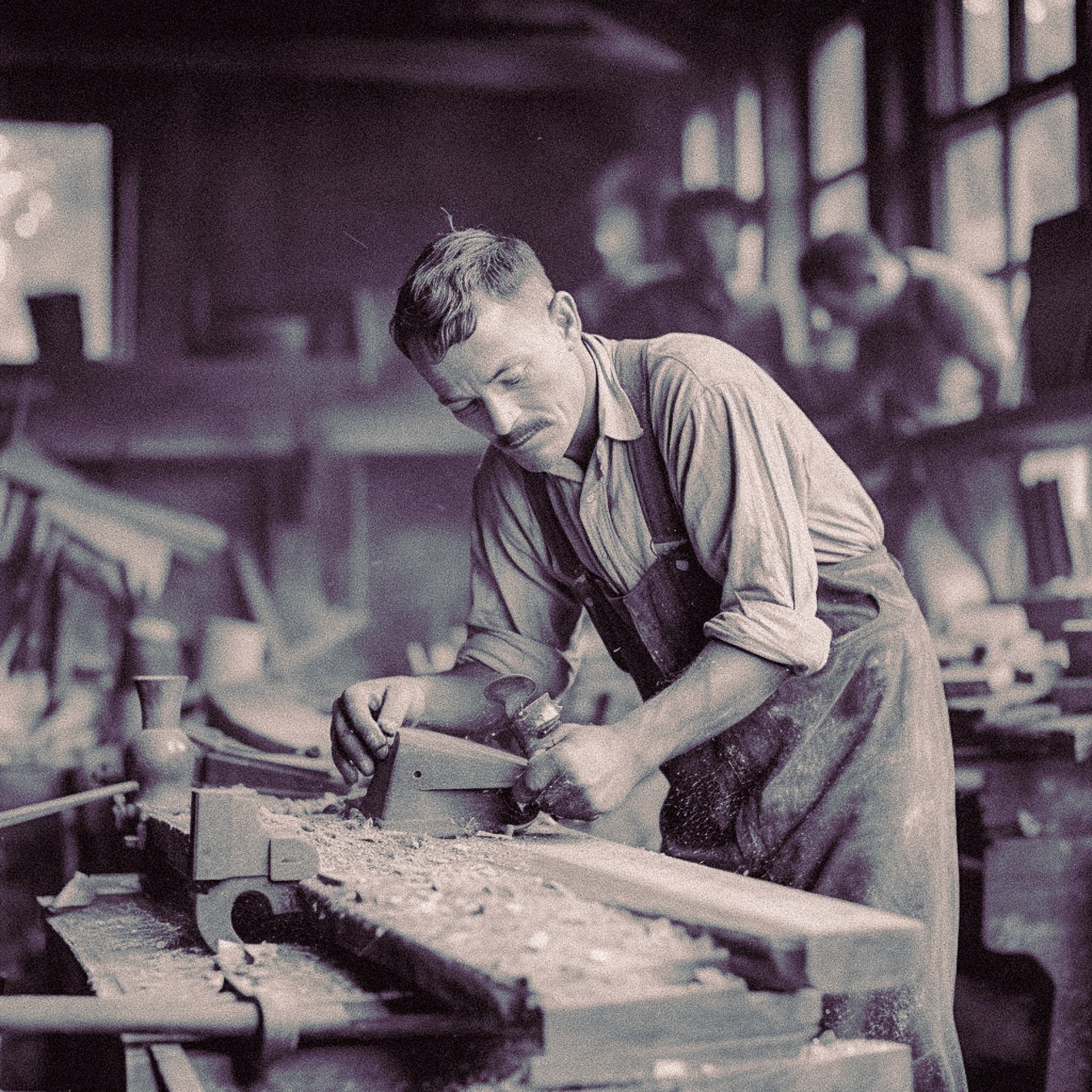The Evolution of Modern Design & The Influence of Custom Furniture Makers
If you’re the type of person who pages through design magazines, admiring the clean lines of modern furniture the way a car enthusiast looks at the latest hyper cars, it’s important to understand the history of modern design, who, and what influenced it. The modern era of design emerged along side other popular design movements of the time, Futurism, Art Nouveau, and Art Deco, all ran concurrent to each other. From the early 20th century to the present day, furniture designers have continuously moved in new directions, experimenting with materials, shapes, and aesthetics. One integral aspect of this evolution is the significant role played by custom furniture makers. These craftsmen not only shaped individual pieces but also left an indelible mark on the broader design landscape, blending traditional craftsmanship with the ideals of the modern era.
The roots of modern design can be traced back to the early 20th century, a period marked by profound societal shifts due to industrialization and the emergence of new materials and technologies. Designers, particularly those associated with the Bauhaus School in Germany, sought to marry functionality with artistic expression, emphasizing clean lines, simplicity, and a departure from the ornate styles of the past. This marked the dawn of a new era in design that would redefine the way we perceive and interact with furniture.
Arguably one of the most famous furniture designs of the Bauhaus era was created by architect and furniture designer Marcel Breuer. In 1925 the metal framed, Model B3 chair was developed by Breuer. It was his desire to break away from the schools wood shop, and work with metal that led to the iconic chairs design.
An unidentified woman wearing an Oskar Schlemmer mask, seated in a Marcel Breuer Wassily Chair, c. 1926.
While industrialization brought about mass production and standardization, custom furniture makers continued to thrive by emphasizing the enduring value of handcrafted, bespoke pieces. These artisans played a pivotal role in bridging the gap between traditional craftsmanship and the burgeoning modern design movement. In doing so, they introduced a sense of individuality and artistry into a world increasingly dominated by the uniformity of mass-produced goods.
The interwar years, November 1918 to September 1939, saw custom furniture makers embracing the principles of modernism while infusing their creations with the warmth and character that only skilled craftsmanship could provide. Artisans took inspiration from the likes of Walter Gropius, Marcel Breuer, and Le Corbusier, translating the ideals of the modern movement into unique, handmade pieces that stood as a testament to both skill and creativity.
The mid-20th century witnessed the rise of iconic designers whose work would come to define an era. Figures such as Charles and Ray Eames, Mies van der Rohe, and Eero Saarinen became synonymous with Mid-Century Modernism. This design movement emphasized simplicity, functionality, and a harmonious integration of design and technology. Concurrently, custom furniture makers during this period embraced these ideals, producing pieces that echoed the spirit of the time while still maintaining the artisanal touch that set them apart. The synergy between mass-produced and custom-made became apparent during this era. While manufacturers were producing affordable, accessible furniture for a growing middle class, custom furniture makers continued to cater to those who sought one-of-a-kind pieces, emphasizing craftsmanship and unique design elements.
Ray Eames DCM Chair was mass produced in 1946 when bending plywood was discovered.
As the late 20th century unfolded, there was a discernible shift in consumer preferences. A renewed appreciation for craftsmanship emerged, prompting a move away from the excesses of mass production. Custom furniture makers experienced a renaissance, with designers and consumers alike seeking unique, handcrafted pieces that spoke to individual tastes and preferences. This period witnessed a fusion of traditional craftsmanship with contemporary design, resulting in furniture that was both timeless and innovative.
Artisans became champions of sustainability and ethical production, drawing attention to the environmental impact of mass-produced goods. This shift in consciousness saw a resurgence of interest in locally sourced materials and traditional crafting techniques. Custom furniture makers played a pivotal role in this movement, offering consumers an alternative to the disposable culture that had come to define the latter half of the 20th century.
With the advent of the internet and digital technologies, custom furniture makers found new avenues to showcase their work and connect with a global audience. Online selling platforms allowed artisans to reach clients seeking bespoke pieces that reflected their distinct personalities and lifestyles. The ability to collaborate with clients on a global scale expanded the influence of custom furniture makers, creating a more diverse and interconnected design community.
Digital tools, such as 3D modeling and online collaboration platforms, have empowered custom furniture makers to explore innovative design concepts and efficiently communicate with clients. This technological leap has not only streamlined the design process but has also opened up new possibilities for creativity and collaboration across geographical boundaries.
Artist and Metal Worker Evan Yee in his Brooklyn Studio.
In the 21st century, custom furniture makers continue to play a crucial role in the evolution of modern design. In a world saturated with mass-produced goods, consumers increasingly value the authenticity, quality, and unique character offered by custom-crafted furniture. Designers and artisans collaborate to create pieces that not only serve a functional purpose but also tell a story, reflecting the individuality of both the maker and the owner.
The contemporary custom furniture landscape is characterized by a diverse range of styles and materials. From reclaimed wood and industrial metals to innovative sustainable materials, artisans are pushing the boundaries of what is possible, creating pieces that are not only visually striking but also environmentally conscious.
In an era dominated by fast fashion and rapid consumption, custom furniture makers provide a counter-narrative. They emphasize the longevity and enduring beauty of well-crafted pieces, encouraging consumers to invest in furniture that transcends trends and stands the test of time. This shift in mindset aligns with broader movements towards conscious consumerism and a desire for meaningful connections with the products we bring into our homes.The history of modern design in furniture is a rich tapestry woven with the threads of innovation, functionality, and craftsmanship. Custom furniture makers have been integral to this narrative, contributing not only to individual pieces but also shaping the broader design ethos. From the early 20th century to the digital age, these artisans have embraced the principles of modern design while infusing their creations with a timeless and personalized touch.As we look to the future, the collaboration between designers and custom furniture makers is likely to continue driving the evolution of modern design, ensuring that each piece tells a unique story of creativity and craftsmanship. In a world that is becoming increasingly aware of the environmental and social impact of consumer choices, custom furniture makers stand as torchbearers of sustainability, offering a path towards a more conscious and meaningful approach to the way we furnish our spaces. The marriage of tradition and innovation, craftsmanship and technology, defines the ongoing legacy of custom furniture makers in the ever-evolving narrative of modern design.




